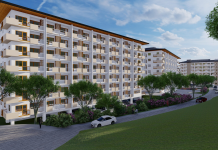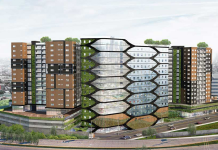The next big growth area for the Philippine real estate industry is relatively new and may even be unfamiliar to some. However, its growth will be massive moving forward. According to Santos Knight Frank, data centers are expanding in terms of importance as digitization increases across the country. And their impact is already being felt on the property market.
“We believe data centers are the next big growth area for the real estate industry in the country, and we are very excited to be at the forefront of this as a leading real estate consultant for international and regional data center operators,” Monica Gonzalez, Santos Knight Frank’s Data Centers Lead and Manager for Occupier Solutions & Services, said.
Demand for data centers is on the rise, both in the Philippines and globally. That is a byproduct of the ever-increasing use of technology in everyday life. Greater data consumption has highlighted the urgent need for more facilities.
“Overall, the worldwide data center industry is experiencing great growth as data consumption grows at a rapid rate and digitization is spreading to more and more facets of our lives. Data center operators have been aggressively expanding in Asia,” Gonzalez stated. “The Philippines has become one of the emerging market or hot destinations for these operators as they recognize our potential in terms of availability of land, fiber infrastructure, IT talent and local data use and demand.”
The country’s current data center capacity is at 94 MW, but more is set to come online. Gonzalez expects an increase of up to 200 MW of additional capacity coming from confirmed projects in the pipeline.
Now and what’s next for data centers in the Philippines
Data center growth is being driven by both local organizations and international players. Gonzalez noted the Philippine market had been dominated by telcos with PLDT and Globe being the two biggest operators. However, competition in the space is picking up.
“We now have the confirmed entry of regional and international operators that will build world-class facilities, which is very exciting,” Gonzalez reported. “Notable projects include YCO Cloud Centers’ 12-MW facility in Batangas, as well as SpaceDC’s planned campus in Rizal with a total phased capacity of 72 MW. PLDT has also recently announced their plans of building a 100-MW facility in Laguna.”
This is simply a start. The reason Santos Knight Frank has tipped data centers as the next big growth area for the Philippine real estate industry is due to the fact much more activity in this sector is likely.
“We absolutely expect more regional and international players to enter the country in the medium term. Santos Knight Frank has registered about 125 MW worth of interest in potential additional capacity from data center operators considering establishing facilities in the Philippines,” Gonzalez detailed.
With more operators considering a move to the Philippines and current firms looking to scale up, opportunities are numerous at the moment. In particular, local businesses still have time to become involved with this part of the real estate sector in various capacities.
“Many of these operators will be looking for local partners, so there is definitely an opportunity for local firms to get into the data center industry through joint venture or other partnership structure,” Gonzalez pointed out.
Finding a partner
Data centers can be a daunting sector to get involved with regardless of if you’re an operator, occupier or related to the industry in some other way. The key to navigating obstacles is finding a partner who understands the unique challenges you’ll face and has the knowledge and capability to ensure your needs are met.
“Santos Knight Frank can support data center operators through the full process of establishing their data center, beginning with market research and due diligence, site selection and acquisition of property, project management and facility construction, leasing and marketing, and finally, facility management of the operational data center. We also represent occupiers looking to take data center space or capacity,” Gonzalez concluded.




















